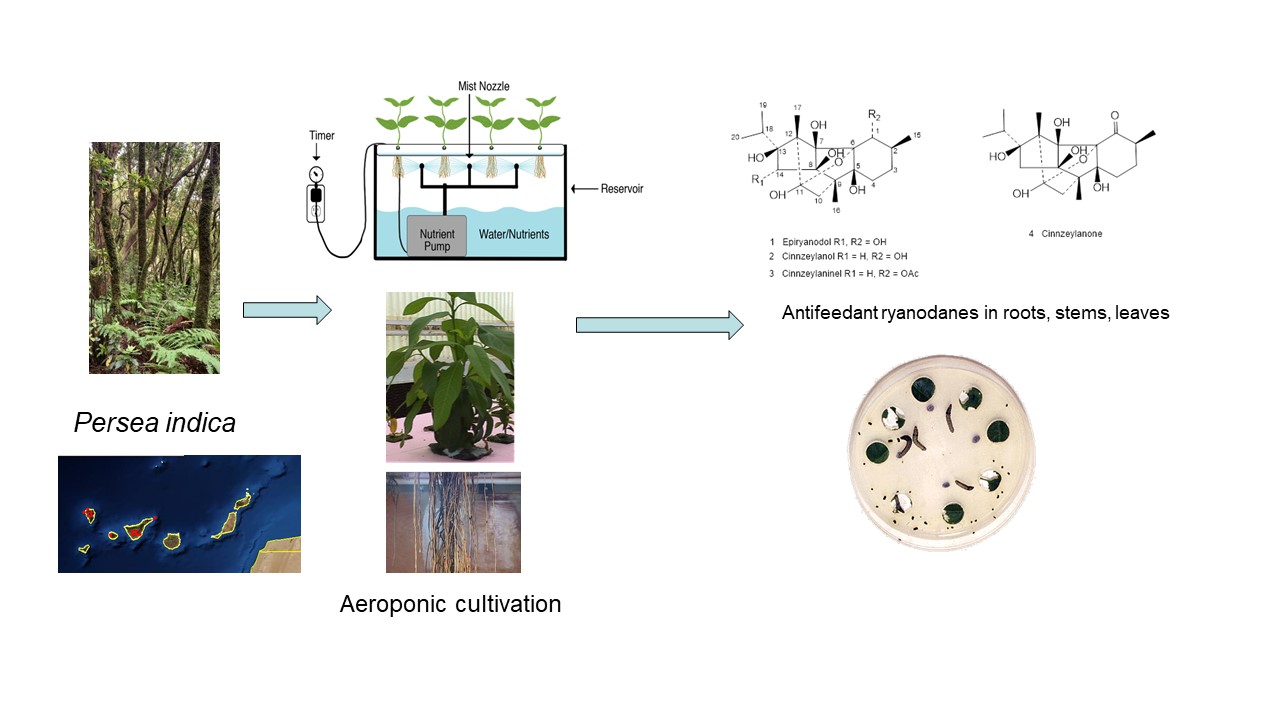In this work we have investigated the accumulation of ryanoids in different plant parts (leaves, stems roots) of aeroponically grown Persea indica cloned trees (one year old cloned individuals) and a selected mature wild tree. We have tested the insect antifeedant (against Spodoptera littoralis, Myzus persicae and Rhopalosiphum padi) and nematicidal (against Meloidogyne javanica) effects of ethanolic extracts from these different plant parts. The HPLC-MS analysis of P. indica extracts showed that the mature tree (wild) leaves had 2 times more chemical diversity than the stems. The aeroponic plants showed lower differences in chemical diversity between leaves and stems, with the lowest diversity found in the roots. The ryanodane epiryanodol (1) was present in all the plant parts, with the mature stems (wild) having the highest amount. The aeroponic stems also accumulated ryanoids including 1, cinnzeylanol 2 and cinnzeylanone 4. The insect Spodoptera littoralis was strongly affected by the stem extracts while the leaf ones were moderately active. Based on the predicted vs. the real antifeedant values we conclude that the ryanoid content (1 or a combination of 2, 4 and 1) explained the antifeedant effects of the stem extracts while addition-al components contributed to the activity of the leaf ones. Therefore, careful individual selection of P. indica seedlings should be carried out prior to proceed with its aeroponic cultivation in or-der to obtain ryanodane-rich stem or leaf extracts with strong antifeedant effects on S. littoralis.

